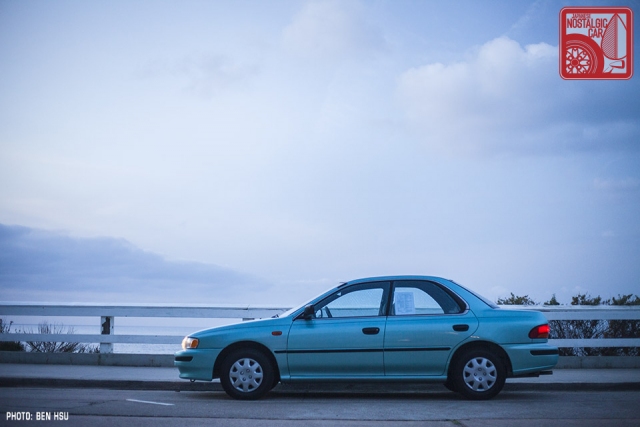
In 1991 Subaru had a pretty decent reputation, sort of like a Japanese Volvo. Agricultural, reliable and honest, Subaru wasn’t known for filling their cars to the brim with tech or WRC domination. It wasn’t that they didn’t try; at one point the Leone came dressed up with a turbo, digital dashboard, alarm clock, and even air suspension. The problem was, it just didn’t click. The fact of the matter was that by 1991, as great a car as the Leone was, it felt old hat. For 1992, however, Subaru created what was then the crowning achievement of their 63-year company history. Twenty-five years ago Subaru debuted the first Impreza.

Subaru had a laundry list of features needed to bring the Leone (aka GL-10 and Loyale in North American markets) to the new decade. The engine that powered it was at the end of its lifespan, and frankly the car looked outdated. Features such as pillarless windows made the cut, but others, like 4×140 lug pattern hubs, were banished to the depths of hell.
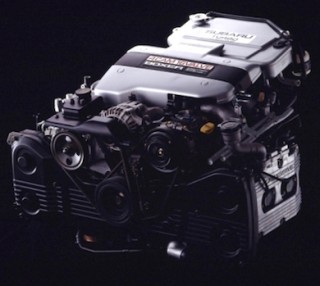 The biggest mechanical change was the engine. Subaru was phasing out the old EA family of boxer motors, which at this point had been in production for 26 years, and since the launch of the Legacy had been the new EJ family since the launch of the Legacy.
The biggest mechanical change was the engine. Subaru was phasing out the old EA family of boxer motors, which at this point had been in production for 26 years, and since the launch of the Legacy had been the new EJ family since the launch of the Legacy.
The engine was all new, but Subaru kept what worked from the old EA while improving power output and reliability. The first generation GC-chassis Imprezas ranged, in the US, from 95 horsepower 1.5 liters available in Europe and Japan, all the way up to a 165-horsepower 2.5-liter found in the 2.5RS. Fueling systems ranged from carburetion to fuel injection with forced induction. Interestingly enough, until 1997 Subaru offered a front-wheel-drive base model of the Impreza. These were largely a successor to the DL base model Leone, but were axed when Subaru decided to make all of their cars all-wheel-drive.
Driving a GC was very much point and shoot. You can huck it onto a cloverleaf and ease onto full throttle without any complaining from the tires. Regardless of engine, the gearbox was such that it didn’t feel underpowered. Maybe the 1.8-liter engines were a little light on the torque, but it was light years ahead of the outgoing Leone. It was exactly what Subaru needed, a car that rewarded the driver. It made the commute to work supremely enjoyable, and zipping through high speed corners would find yourself grinning ear to ear.
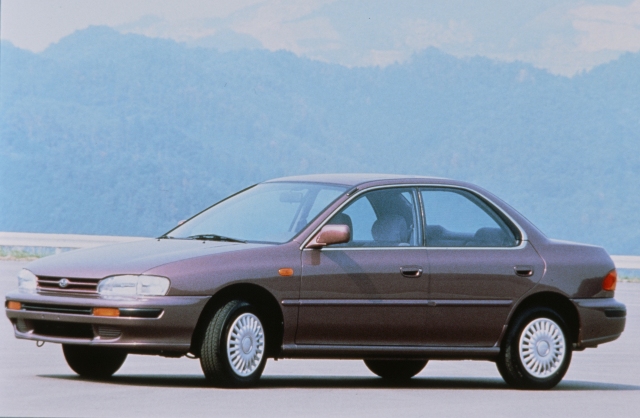
On the exterior, the Impreza looked like it had jumped decades into the future. The EA82 L-Series had used bismuth as its main design inspiration, but even the first-gen Legacy still exhibited remnants of the boxy 80s design language. For the organic 90s, the Impreza was rounded and curvaceous, not unlike a pear. Subaru even kept subtle styling cues from the Leone, like the small lip that the tailgate of the Leone wagon had. People at Subaru were fearful that long time Leone buyers wouldn’t adopt the flashy new Impreza. Although it was by no means the first of the super round 90s cars, it definitely became a staple of 90s, and later 2000s, design.
The interior was as near to perfect as was possible in 1992. It had thin pillars for excellent visibility and minimal blind spots, and everything was in the correct location. It had no gimmicks but was still comfortably equipped.
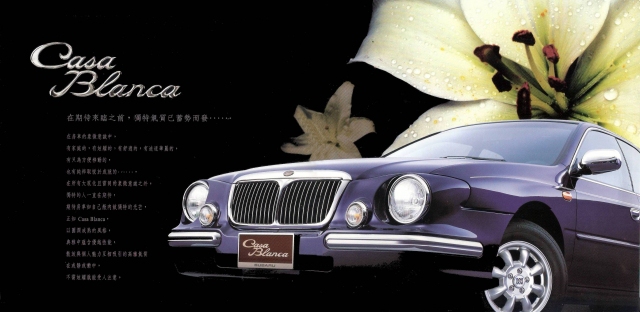
When talking about the GC Impreza and design, there’s an elephant man in the room — the Impreza Casa Blanca. While Subaru is occasionally known for questionable design, The ICB might be their worst-ever fashion crime. A grotesque outgrowth of Japan’s retro car fad of the 1990s, it was a faux-classic style over substance. The engine was the paltry 95-horsepower EJ15. Not everything from this movement was bad; we got the Nissan’s Pike cars and the Mazda Miata, and Subaru’s own Vivio Bistro looked down right cute.
Perhaps the most frustrating thing about the Casa Blanca is that it was made in a limited production run of 5,000 and was such a great example of “Hey, Japan’s so weird!” that it gets tons of press coverage. Because of its exposure and limited numbers, the Casa Blanca could very well end up going up in value, although I pray that I’m wrong.

On the other end of the spectrum was the Outback Sport, which would become far more successful than even Subaru could have possibly imagined. It was mechanically identical to the Subaru Impreza wagon, but with an off-road package consisting of two tone paint, a slightly higher ride height, and hood scoop (despite being non-turbo).
Given its name and Subaru’s historic popularity in the Australian market, using Paul Hogan’s Crocodile Dundee for commercials was perhaps an obvious choice. The Outback Sport was marketed as a better handling and more efficient competitor to the RAV4 or CRV. That wasn’t a lie, as those were small trucks based off of existing car platforms; all Subaru did not waste resources on designing a redundant body.
The marketing worked really well, and for most Americans this is the quintessential Subaru — a wacky, tall, AWD compact car. During the era it was polarizing, which kept a lot of people from buying Subaru but, those in the know were graced with one of the most capable compacts on the market.

Capability wasn’t just limited to driving the spawn to school, or helping Paul Hogan out run some baddies in a RAV4. The GC Impreza also marked Subaru’s entry into the horsepower wars back home in Japan. While the old Leones of the 80s had turbo options, they were non-intercooled afterthoughts and struggled to break 110 horsepower. The GC Impreza had one more ace up its sleeve.
Seeking to make a concerted effort on the international rally stage, Subaru planned to retire the Legacy from rally duties and go all-in with the Impreza. From the model’s debut, Subaru made its intentions clear, announcing the Impreza WRX, for World Rally eXperimental, and fitted the top-spec flagship with a 240-horsepower turbocharged and intercooled 2.0-liter boxer. To save space and for reliability in racing, the intercooler was mounted on top of the engine, resulting in a large and iconic hood scoop for airflow. Subaru even offered a WRX Type RA trim level, a stripped-down model for competition use, devoid of ABS and air conditioning while equipped with minimal sound insulation and crank windows.
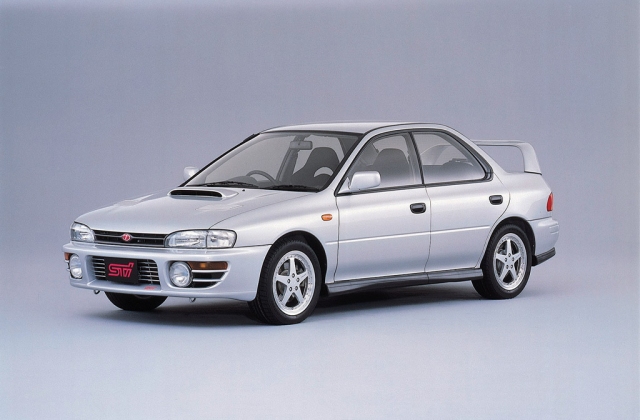
While the hotted-up WRX graced the lineup off the bat in 1992, Subaru had even more tricks to come. In 1994, Subaru began taking WRXs off their production line and immediately sending them to their in-house tuner, STI (Subaru Technica International), to receive forged pistons, larger intercoolers, and a host of other mechanical goodies. To top it off, STI added a larger spoiler, lightweight wheels, and a cherry blossom-pink grill emblem. Horsepower leapt up to 260 and became the closest you could get to an actual 555 WRC racer for the road.
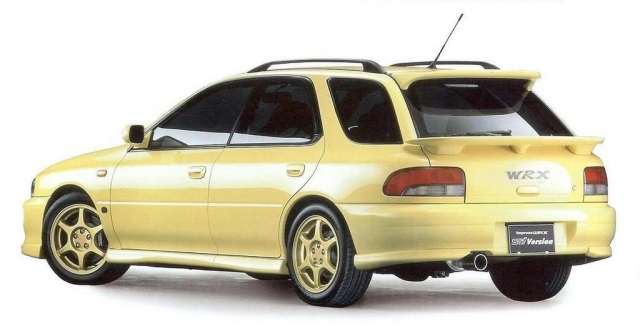
In subsequent years, STI would make continuous improvements to their creation, and these would be known as Version II, III and so on. With each revision the car grew more specialized from the standard WRX, and to top it all off they started a WRX STI Wagon line in 1995. Aftermarket tuners also garnered success from hotting it up even further, and word quickly spread across the Japanese aftermarket scene of the new contender to the horsepower wars.
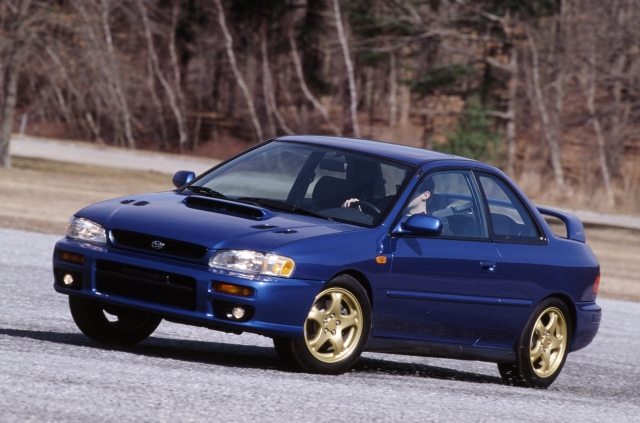
In America, enthusiasts clamored for the WRX and STI to cross the Pacific. Subaru saved the best for themselves, but threw us a bone with the 2.5RS coupe in 1998, which was unique to our market (of course, that was after we got teased with the turbocharged 2.5RX concept car the year prior).
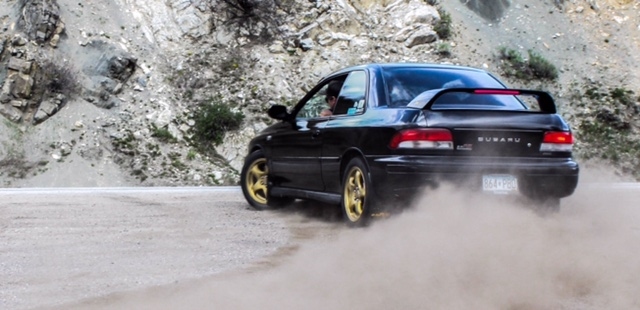
Even without a pressurized snail hanging off the right cylinder head, the 165-horsepower DOHC 2.5 felt right at home. The low end torque of the 2.5-liter flat-four gave the American market their much beloved thrust. Almost immediately after release though, Subaru’s Achilles’s heel reared its ugly head as head gaskets began failing prematurely. Some quick thinking from engineers resulted in the Version II 2.5RS, which swapped the troubled DOHC head out for a SOHC variant. To avoid negative press, they claimed it was to add 4 pound-feet of torque. Clever.
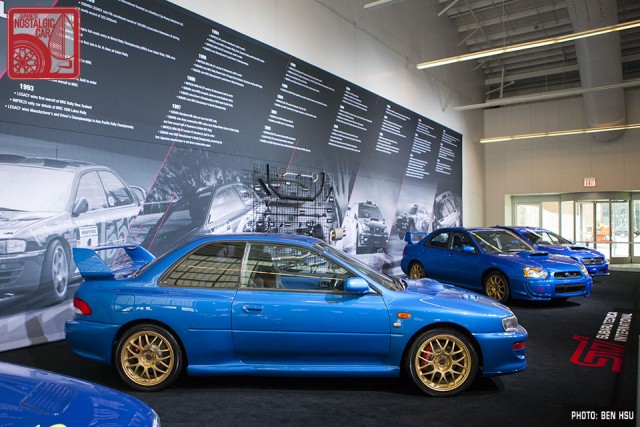
While the WRX and its resulting STI versions were already great, a cadre of madmen engineers at Subaru produced a true unicorn for the ages. The Subaru 22B was built in 1998 to commemorate three consecutive WRC titles and Subaru’s 40th anniversary. Even compared to the Version V STI that was on sale at that time, it was obvious that the 22B was something special.
Widebody fenders housed a set of gold BBS wheels, and the iconic bookshelf wing on the bootlid was fully adjustable. Under the bonnet, despite saying “EJ22,” was totally different from anything off the shelf. A set of high-flow cylinder heads were mated to a closed deck block and boost pressure was raised until the car made 280 horsepower, the maximum allowed under the Japanese carmakers’ Gentleman’s Agreement. A driver controlled center differential and AWD system made the car not only unstoppable on gravel, but also a tour de force on tarmac as well. Produced in extremely limited numbers — 424 to be exact — this ultimate version of the GC generation sold out in less than an hour after going on sale. More recently, when one went for auction in May of 2016, it garnered a hammer price of $94,704.
Subaru had knocked it out of the park with the Impreza. It was practical, affordable and a hoot to drive. It was honest. Its success transformed Subaru’s brand image from that of a quirky snow-belt sled or farm conveyance to that of a smart modern runabout that was just at home in urban landscapes as it was tearing through a dirt-strewn rally stage. In the UK, it has become the de facto tuner car, but the legions of enthusiasts it spawned was worldwide. Few models have so singularly changed the reputation of an entire marque, and for that, the GC Impreza and its numerous variations deserve a revered place in Japanese automotive history.


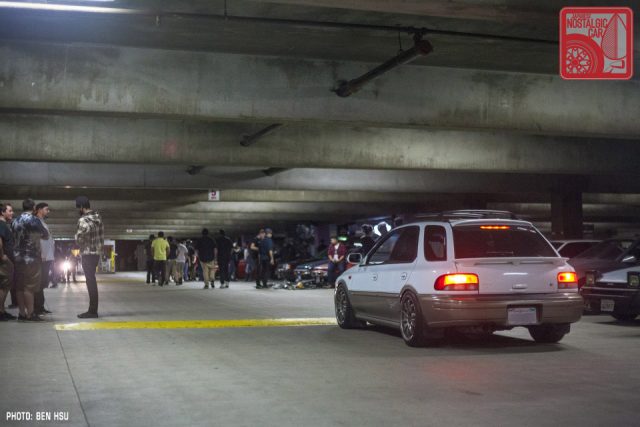

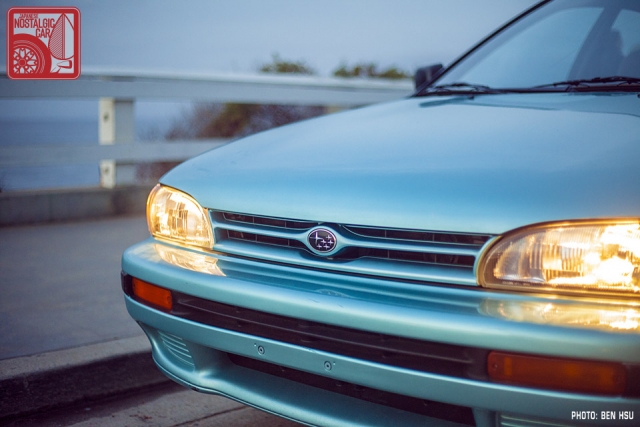
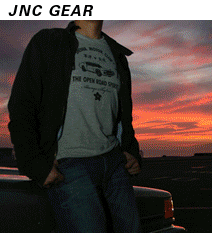
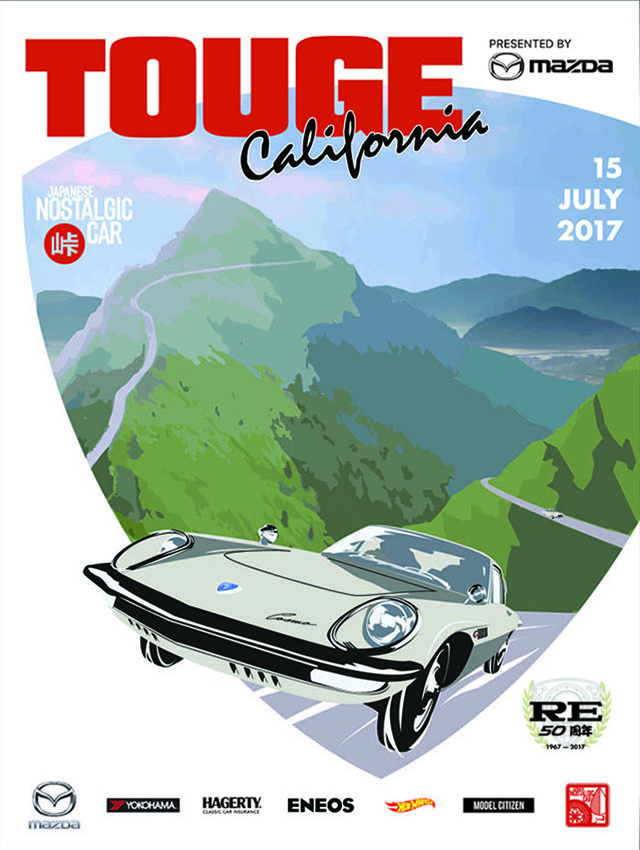


You know for a 25 year old car the Impreza still looks fairly up to date. Subie has had great sucess with this vehicle improving it throughout the years.
I worked for a Subaru dealership and we had a GC Outback Sport come in. I preferred that over any of the new Imprezas we had on the lot by a mile and so did the rest of the sales staff (minus one person). Plus it’s interior fabric is the stuff that dreams are made of.
I have a real love for the Impreza 2.5RS coupes. I looked at one at Speedway Subaru in 1998 right after they came out and fell in love. It was a black version with the optional gold wheels and looked so right it hurt. It was however 2 more years before I bought one. I went with a silver 2000 2.5 RS coupe with the 5-speed. Silver was the only color I could find on any of the lots in Indianapolis. Blue was my favorite but I had to settle for silver. I was not disappointed at all. More power would have been nice but the 165hp out of the 2.5 was enough to get mine into the high 15’s in the quarter mile. My best time was 15.83 which I thought was excellent considering the vehicle weight with me in it. In 2004 I traded it in for a 2004 Subaru Forester XT turbo automatic and really wished that the 2.5 turbo four out of the Forester had been stuffed into my 2.5RS coupe instead. Out of the over 250 cars I have owned in my life my old 2000 2.5 RS coupe is the only one I want back.
Fun fact, that black 2.5RS we pictured above is your dream car then. It has a semi-built EJ25 turbo, I don’t remember the exact engine designation.
Yea I see it now, I didn’t notice it earlier. My trunk monkey would love it too. Looks like I’m going to have to keep an eye on net to see if one pops up for sale close to me……
Great piece as always, Ryan! That blue RX is killer, as are, of course, the Imprezas and especially that yellow WRX wagon – mmm mmmm good.
Thank you
I’ve never been a real big Subaru guy but I would love to have a real GC WRX STI
I have a JDM 1999 V5 STi Type RA, and is simply the best car ever. You can see some pictures of my Scoobie in instagram @mati.ragc88
I’ve not owned a GC, but I had a GD STi and an SG Forester XT, both 2005’s. I miss both cars immensely.
There is just something very RIGHT with how they drive.
The GC Impreza is just so right. It sold for eight years with almost no change in looks, and captured a huge range of buyers around the world, from farmers to boy racers, with a single basic engine and drivetrain design.
In the UK it was almost the 90s equivalent of the Jag Mk2 – a compact saloon packing sports-car power, equally beloved of enthusiasts, police and criminals.
The Impreza’s success is a real tribute to proper engineering, as opposed to the platform kind practiced by GM and VW. The Impreza STi is freakishly light for what it is – has any other car packed 280hp, 4wd, four doors and a proper boot into 1250kgs? Perhaps Subaru made use of their aircraft expertise in the body? The boxer engine gives a low cg, and the symmetrical drivetrain reduces torque steer.
Having designed it ‘right’, Subaru were then able to spin off an array of variants to meet many market niches. The WRC campaign was a perfect fit with the brand’s values, and championships for both Colin McRae and Richard Burns gave the GC real competition heritage in the UK.
Well said! As Patrick Strong and I have discussed, if there was a third season in the Life on Mars/Ashes To Ashes series taking place in the 90s, Gene Genie would probably have traded in the Quattro for a GC Impreza STI or 22B.
Yes, and the series would be called “Dead Man Walking.”
That is too perfect. Fire up the Subie.
good Day all,
we found the Subaru Vivio KK Promo Car ( original from Noriyuki Koseki) in Kenya… the car was used in 1993 for presentation while 3 other cars entered the Safari Rall… Colin Mc Rae failed but local Patrick Njiru made History. https://www.youtube.com/watch?v=S00YHiK7-RE&t=71s
I have a 1986 brat I want to sell it .Anyone interested email me at fearoth12345@gmail.com I live in Queen Creek Arizona 500.00 needs restored I have a new set of seats for it. Doesn’t run. Has be be hauled by trailer tires are flat. Clear title.